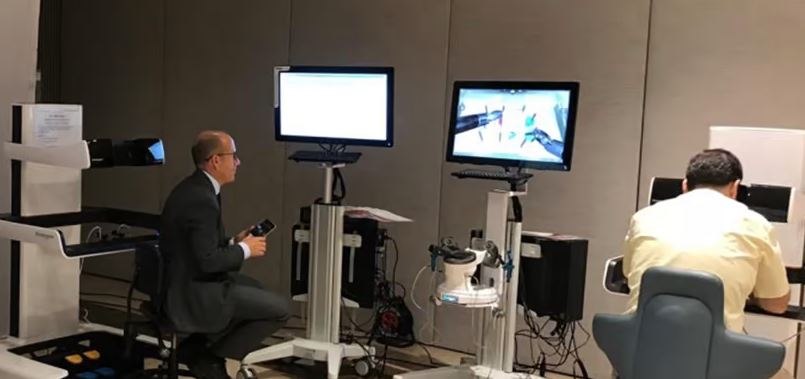Customer Company Size
Large Corporate
Region
- America
Country
- United States
Product
- ICONICS FDD solution
- Microsoft SQL Server
Tech Stack
- Big Data
- Internet of Things
- SQL Server
Implementation Scale
- Enterprise-wide Deployment
Impact Metrics
- Cost Savings
- Environmental Impact Reduction
- Productivity Improvements
Technology Category
- Analytics & Modeling - Big Data Analytics
- Analytics & Modeling - Real Time Analytics
Applicable Industries
- Education
Applicable Functions
- Facility Management
- Maintenance
Use Cases
- Building Energy Management
- Predictive Maintenance
- Real-Time Location System (RTLS)
Services
- System Integration
- Software Design & Engineering Services
About The Customer
The University of Nebraska-Lincoln (UNL) is a public research university based in Lincoln, Nebraska. It is the state’s oldest university and currently serves more than 25,000 students. UNL is a strong proponent of environmental sustainability and has set ambitious goals to reduce energy use across its buildings. The university has a Building Systems Maintenance (BSM) team that ensures the comfort of students, faculty, and staff by maintaining optimal building temperatures, functioning alarm systems, and lighting. The BSM team is also responsible for installing energy-efficient equipment and automating building systems to minimize energy waste. The university has over 16.5 million gross square feet of building space, making energy savings a significant focus for its resource management efforts.
The Challenge
The University of Nebraska-Lincoln (UNL) had set an ambitious goal of reducing energy use by 15 percent across many of its buildings. To achieve this, the university had been installing energy-efficient equipment and automating building systems to ensure that mechanical and electrical equipment minimized energy waste. However, just like a brand-new car that’s driven off the lot, building equipment starts to deteriorate as soon as it’s installed, losing energy efficiency over time. To mitigate deterioration, UNL had in the past performed ad-hoc recommissioning, but was now developing a comprehensive recommissioning program. The university wanted to find a way to maintain optimal performance without the expense of periodic recommissioning.
The Solution
To reduce energy consumption and maintain optimal performance of building equipment, UNL implemented a fault detection and diagnostics (FDD) solution developed by Microsoft CityNext partner ICONICS. The solution combines big data with the Internet of Things (IoT) to help UNL identify and fix problems well before mechanical equipment breaks down. The university has attached sensors to equipment in buildings across its campus to monitor performance in real time. When a sensor captures a reading outside of designated parameters set by the BSM team, an alert is triggered and sent to the university’s maintenance control center, where the issue is either fixed remotely or a technician is dispatched to the building. UNL began installing the ICONICS FDD solution in early 2016 and currently uses it to monitor 52 buildings. In the next few years, the university plans to track as many as 80 major university buildings with FDD, along with five campus utility plants.
Operational Impact
Quantitative Benefit

Case Study missing?
Start adding your own!
Register with your work email and create a new case study profile for your business.
Related Case Studies.

Case Study
Revolutionizing Medical Training in India: GSL Smart Lab and the LAP Mentor
The GSL SMART Lab, a collective effort of the GSL College of Medicine and the GSL College of Nursing and Health Science, was facing a challenge in providing superior training to healthcare professionals. As clinical medicine was becoming more focused on patient safety and quality of care, the need for medical simulation to bridge the educational gap between the classroom and the clinical environment was becoming increasingly apparent. Dr. Sandeep Ganni, the director of the GSL SMART Lab, envisioned a world-class surgical and medical training center where physicians and healthcare professionals could learn skills through simulation training. He was looking for different simulators for different specialties to provide both basic and advanced simulation training. For laparoscopic surgery, he was interested in a high fidelity simulator that could provide basic surgical and suturing skills training for international accreditation as well as specific hands-on training in complex laparoscopic procedures for practicing physicians in India.

Case Study
IoT platform Enables Safety Solutions for U.S. School Districts
Designed to alert drivers when schoolchildren are present, especially in low-visibility conditions, school-zone flasher signals are typically updated manually at each school. The switching is based on the school calendar and manually changed when an unexpected early dismissal occurs, as in the case of a weather-event altering the normal schedule. The process to reprogram the flashers requires a significant effort by school district personnel to implement due to the large number of warning flashers installed across an entire school district.

Case Study
Implementing Robotic Surgery Training Simulator for Enhanced Surgical Proficiency
Fundacio Puigvert, a leading European medical center specializing in Urology, Nephrology, and Andrology, faced a significant challenge in training its surgical residents. The institution recognized the need for a more standardized and comprehensive training curriculum, particularly in the area of robotic surgery. The challenge was underscored by two independent studies showing that less than 5% of residents in Italian and German residency programs could perform major or complex procedures by the end of their residency. The institution sought to establish a virtual reality simulation lab that would include endourological, laparoscopic, and robotic platforms. However, they needed a simulator that could replicate both the hardware and software of the robotic Da Vinci console used in the operating room, without being connected to the actual physical console. They also required a system that could provide both basic and advanced simulation training, and a metrics system to assess the proficiency of the trainees before they performed surgical procedures in the operating theater.

Case Study
Edinburgh Napier University streamlines long-distance learning with Cisco WebEX
• Geographically dispersed campus made in-person meetings costly and inconvenient.• Distance-learning programs in Malaysia, India, and China required dependable, user-friendly online tools to maximize interaction in collaborative workspaces.• Virtual learning environment required a separate sign-in process, resulting in a significant administrative burden for IT staff and limited adoption of collaboration technology.

Case Study
8x increased productivity with VKS
Before VKS, a teacher would spend a lot of time showing a group of 22 students how to build a set of stairs within a semester of 120 hours. Along with not leaving the teacher much time to provide one-on-one support for each student to properly learn carpentry, it also left a considerable amount of room for error. Key information would be misinterpreted or lost as the class was taught in the typical show-and-tell way.

Case Study
Scalable IoT Empowering GreenFlex's Sustainable Growth
GreenFlex, a company that supports sustainable development, decarbonization, and energy efficiency, faced several challenges in its quest to expand its business. The company needed to deploy a robust and sustainable IoT technology to support its growth. It was crucial for them to monitor and control devices at customer sites in a safe and reliable manner. They also needed to integrate devices across a range of communication protocols and gather and act on data to meet efficiency targets. GreenFlex had previously built IoT capabilities into its digital platform, GreenFlexIQ, to monitor and manage customer sites remotely. However, they soon realized that they needed a new platform to support their ambitions. They needed a platform that could scale to connect more devices for production management and make it easier for the operations team to manage devices in the field.






